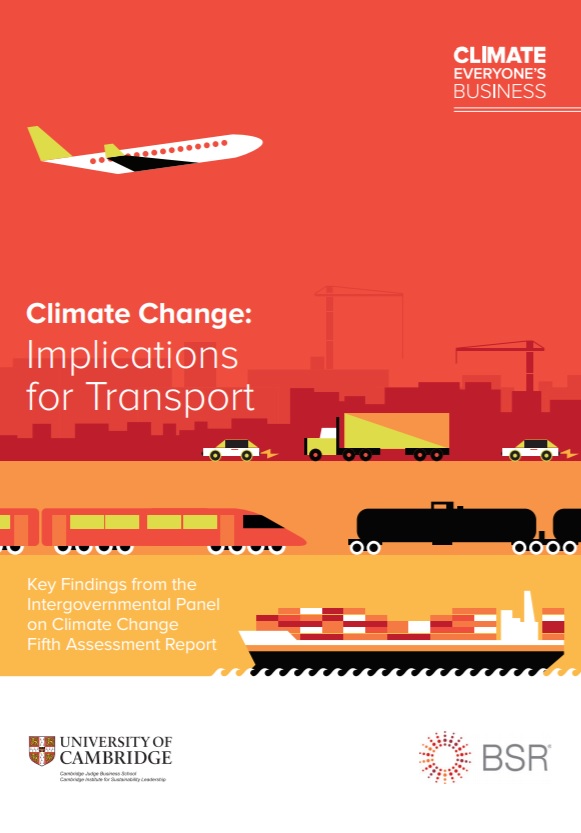Overview
The Fifth Assessment Report from the Intergovernmental Panel on Climate Change is the most comprehensive and relevant analysis of our changing climate. It provides the scientific fact base that will be used around the world to formulate climate policies in the coming years.
This document is one of a series synthesizing the most pertinent findings of AR5 for specific economic and business sectors. It was born of the belief that transport stakeholders could make more use of AR5, which is long and highly technical, if it were distilled into an accurate, accessible, timely, relevant and readable summary.
Although the information presented here is a ‘translation’ of the key content relevant to this sector from AR5, this summary report adheres to the rigorous scientific basis of the original source material. Grateful thanks are extended to all reviewers from both the science and business communities for their time, effort and invaluable feedback on
this document.
The basis for information presented in this overview report can be found in the fully-referenced and peer-reviewed IPCC technical and scientific background reports at: www.ipcc.ch
Key Findings
- Impacts of climate change including more intense droughts and floods, heat waves, thawing permafrost and sea-level rise could damage transport infrastructure such as roads, railways and ports, requiring extensive adaptation and changes to route planning in some regions.
- Transport accounts for about a quarter of global energy-related carbon emissions. This contribution is rising faster than for any other energy end-use sector. Without aggressive and sustained policy intervention, direct transport carbon emissions could double by 2050
- LCutting carbon emissions from transport is challenging given the continuing growth in demand and the slow turnover of stock and infrastructure as well as, for some modes, the suitability of alternative fuels with an equivalent energy intensity to fossil fuels. Despite a lack of progress to date, the transition required to dramatically reduce emissions could arise from new technologies, infrastructure and modal shifts, the implementation of stringent policies and behavioural change.
- Many energy efficiency measures have a positive return on investment. Examples such as improving aerodynamics and cutting weight of vehicles, and bringing engines up to leading-edge standards, could cut energy consumption by 30–50% by 2030. Some of these measures have a negative lifetime cost.
- Efficient, low-carbon transport systems have significant co-benefits, such as better access to mobility services for the poor, time saving, energy security, and reduced urban pollution which can lead to better health. These benefits can offset most if not all of the mitigation costs. Integrated, far-sighted planning can create resilient low-carbon transport networks, particularly in new urban areas.



